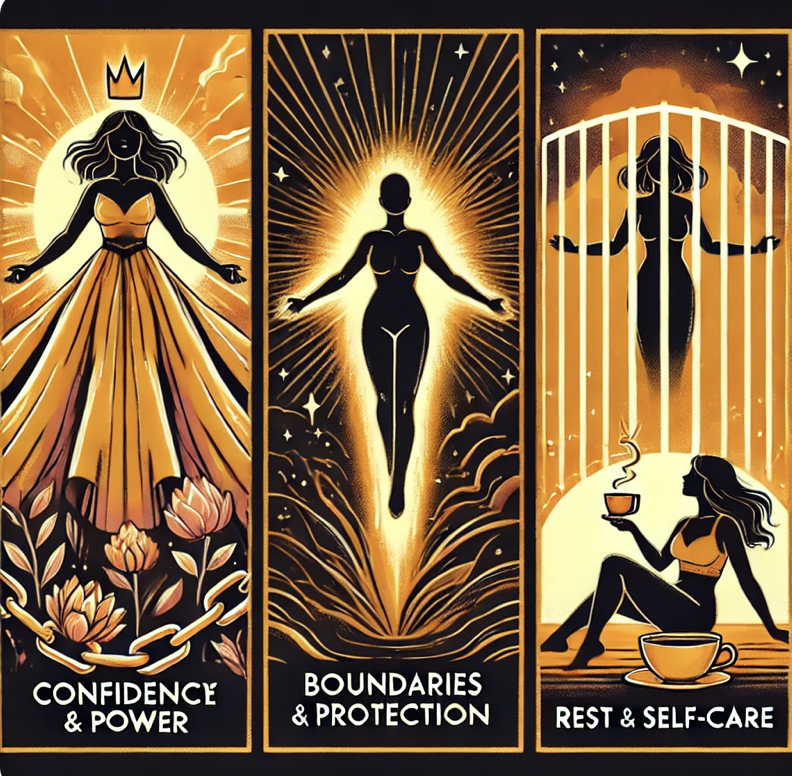Higher Vibes Coaching Blog

10 Truths About Recovery Every Coach and Client Should Know
Coaching someone in recovery—or doing the work yourself These 10 truths go far beyond ICF certification checklists. They speak to the real terrain of addiction, healing, and identity. If you’re a life coach, leadership coach, wellness practitioner, or trauma survivor learning to coach yourself back to wholeness—this is essential. Understand how harm reduction saves lives, why relapse isn’t failure, and how trauma, systemic oppression, and identity shifts shape the recovery process. Whether you’re holding space for someone else or reclaiming your own—this is the groundwork for coaching with clarity, care, and courage.

Hot Seat Therapy and 360° Reviews Are the Same Bullsh*t
Too many internal coaches and managers still measure growth by how well you conform to other people’s expectations—especially if you’re neurodivergent, BIPOC, queer, or disabled. The result? More masking. More burnout. Less truth. This post offers a radical reframe of feedback. We’ll also dig into why the beloved 360° review process often mirrors a shady group therapy tactic called hot seat therapy—and how both can go off the rails without care, consent, and context.

When “You Got This Feels” Like a Slap
Tired of hearing “You got this!” when you’re barely hanging on? Here are 15 phrases that sound supportive—but can actually leave you feeling alone—and what to say instead to get the real help you need.

BIPOC Managers: Lead Without Losing Yourself
Being a BIPOC manager means balancing leadership, mentorship, and unspoken expectations—often at the expense of your well-being. Here, we break down the unique challenges, burnout risks, and systemic barriers BIPOC leaders navigate, backed by data, with actionable insights on how to lead without sacrificing yourself.

When Trauma Pulls You Back, You’re Still Moving Forward
Growth means facing past wounds with new awareness, not starting over. When trauma resurfaces, it’s proof of progress—showing you can respond differently. Here’s how to keep moving forward.

ADHD vs. Autism: Key Differences, Overlapping Traits, and How to Get the Right Diagnosis
ADHD and autism share traits like masking, sensory overload, and social exhaustion, but they are distinct neurotypes (even though there is often an overlap). Learn how to tell the difference, why ADHDers may seem autistic, and how to get an accurate diagnosis.

From Invisible to Unstoppable: How to Be a Thought Leader Without Masking
Struggling to gain visibility despite being an expert in her field, Tara felt shut out on social media. This case study reveals how coaching helped her transform her approach, build influence on her own terms, and land industry recognition—without chasing validation. It also includes tips to help you reframe feeling too different as an advantage, not a liability.

Sassy Quotes to Boost Confidence, Set Boundaries, and Own Your Energy
Confidence is your birthright. These unapologetic quotes will help you stand tall, enforce boundaries like a pro, fight through challenges with resilience, and prioritize rest without guilt—because your energy is priceless, and survival is an art form.

Why So Many Fake Executive Coaches?
Why is “Executive Coach” the hottest (and most overused) title in coaching? This bold take calls out the hype, reveals why real senior-level business experience matters, and offers better title alternatives to build trust—and attract the right clients.

5 ADHD Coaching Mistakes That Sabotage Progress (And What to Do Instead)
Coaching ADHD clients isn’t just about productivity hacks—it’s about understanding how their brains actually work. Here are five common coaching mistakes that can backfire, plus smarter, ADHD-friendly strategies that lead to real results

5 Signs It’s Not Psychologically Safe (and You Should GTFO)
Navigating social interactions in today’s politically charged climate can feel exhausting. Learn how to quickly recognize unsafe conversations, set boundaries, and decide when to engage—or walk away—to protect your psychological well-being.

Marisol’s Story: Choosing Herself in a World That Won’t Stop Questioning Her
Marisol, a recent college grad, struggles with modern dating pressures, cultural misunderstandings, and so-called progressive men who don’t respect her boundaries. They even went as far as to call her racist for wanting to date within her culture. Through coaching, she learns to trust herself, set firm limits, and embrace dating on her own terms. Read her story.

ICF Ethics & Identity in Coaching: Why “I Can Coach Anyone” Is a Red Flag
Some coaches dismiss identity in coaching, violating ICF ethics and DEIB principles while gaslighting clients and peers. Learn why erasing identity isn’t neutrality—it’s unethical coaching that fails to create truly inclusive spaces.

The Myth of “I Can Coach Anyone”: How Lily Zheng’s FAIR Framework Elevates Coaching
Discover why the belief that “I can coach anyone” can be harmful to clients and the coaching profession in this eye-opening case study. Learn how Lily Zheng’s FAIR Framework (Fairness, Access, Inclusion, and Representation) can help coaches develop cultural competence and create truly equitable, client-centered coaching experiences.

Case Study: How Diana Managed Her Cortisol Rollercoaster
Diana is a high-achieving management consultant with a sharp mind who thrives on early morning deep thinking but also truggles with grogginess upon waking. Crowded public settings for too long can spike her stress levels, while excessive evening socializing or late-night work can push her into an overexcitable state, making it hard to wind down for restful sleep. We worked on a cortisol-balancing routine that supported her natural rhythms while preventing stress-induced energy crashes and sleepless nights.

10 Tips to Help ADHD Students Stay on Track When Home Life is Chaotic
When there’s a lot going on at home—whether it’s loud siblings, family stress, or constant distractions—staying focused can feel impossible, especially for students with ADHD. But with the right strategies, you can create a sense of control and structure, even in a busy environment. Here are 10 practical tips to help ADHD students stay on track. Not every tip will be a perfect fit, so experiment and see what helps the most. ADHD brains thrive with structure, movement, and rewards, so keep things simple, flexible, and fun!

Coaches: Using the Narrative Coaching Model Through an Intersectional Lens
Traditional narrative coaching often focuses on individual mindset shifts without addressing systemic oppression. An intersectional approach helps clients reframe their stories while acknowledging external barriers, validating lived experiences, and fostering both personal and collective empowerment.

Coaches: Make the Be-Do-Have Model More Intersectional
The Be-Do-Have Model is often framed in a way that assumes everyone has equal access to the same opportunities, but that’s not the reality for people navigating systemic barriers due to race, gender, disability, class, or other intersectional factors. If coaches want to make it more intersectionality-friendly, we need to acknowledge privilege and structural challenges and redefine success beyond dominant narratives.

Three Easy Ways for Teens with ADHD to Stay Organized
If you identify with ADHD, staying on top of school projects and goals can feel impossible. Long to-do lists get overwhelming, deadlines sneak up, and sometimes, your brain just doesn’t want to start. But don’t worry—you don’t need a complicated planner or strict schedule. You just need a system that works for your brain. Here are three simple and ADHD-friendly ways to stay organized for short-term, mid-term, and long-term projects.

Eating Disorders, ADHD & RSD…Oh My!
ADHD, rejection-sensitive dysphoria (RSD), and eating disorders often intertwine, creating a relentless cycle of perfectionism, emotional dysregulation, and distorted self-perception. Learn how these overlap and some actionable coaching strategies to start to break free from this cycle.